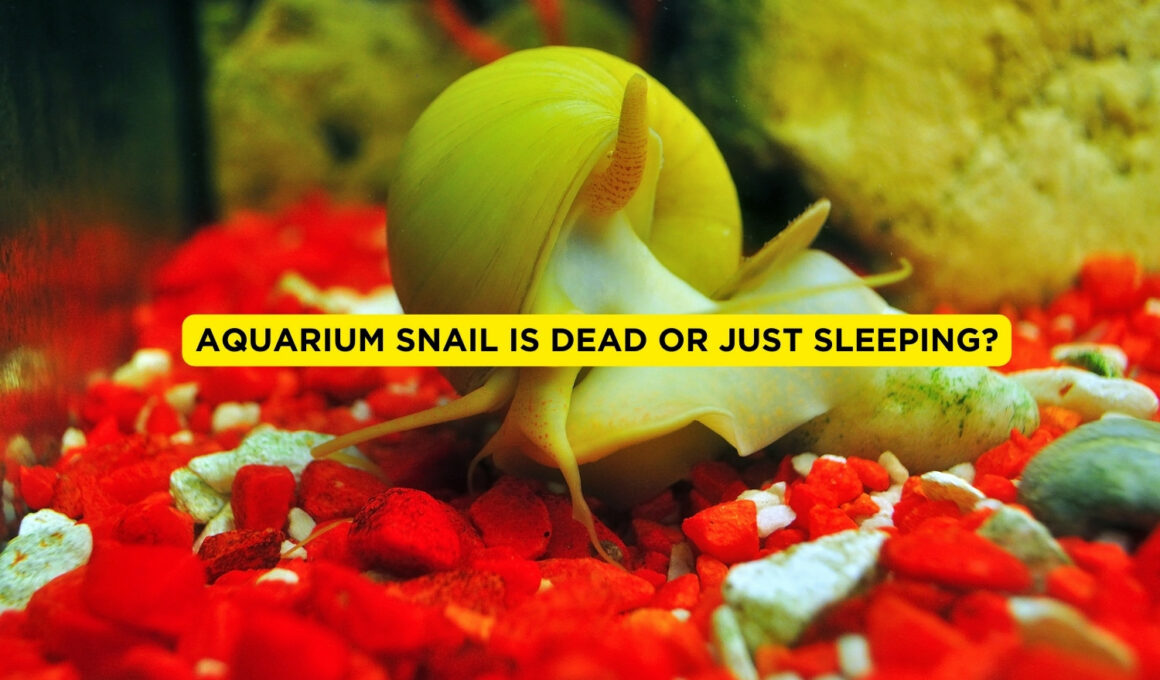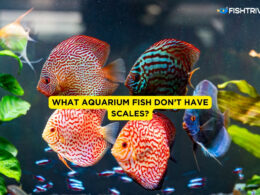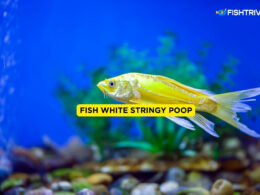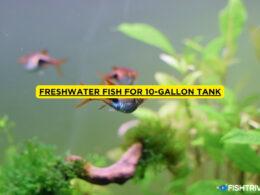In this article Show
Suppose you were out of your house for a day or two, and you remember your slowly moving friend in your fish tank has not moved a bit since you were gone. Now you are worried, that is it dead? Or is it just sleeping?
You may not be aware of the way snails work if you have just your first snail or if you’ve had them for a while. Therefore, in a fish tank that has not moved for a while, you may be shocked by one or more. So you decide to wait for a bit longer for it to either float or move to other places.
A mucus trail usually leaves behind land snails as they slide down. They mostly feed on green leaves such as spinach and salad. You may not think snails are a particularly interesting group of animals known for being slow. Because of one of their most unique behaviors: slumber, we will try to challenge this view.
Snails generally tend to remain inactive for a long time. It may be because of the aquarium waters or may just feel sleepy after a hearty meal, for many reasons. Other animals don’t tend to sleep.
Many people sleep simultaneously so that you can’t see it, but snails are going through a more intricate process. But, if you want to know if your snail is sleeping or if is it dead, we are about to explain that further below.
How to Tell If Your Aquarium Snail Is Dead Or Just Sleeping
There could be many reasons behind snails floating. It varies from where it is living, either in a fish tank or in nature. We will be knowing some common reasons why snails float;
1. Over Eating
After a great meal, snails are also usually static or floating. If you’ve given it food recently and it’s static, it’s just rest. They will usually begin moving again after a couple of hours of sleep.
Some snails, like snail assassins, will eat their prey and then spend some two or three days in hibernation and become active again.
2. Hungry Snail
Either in fish tanks or in nature, food can run out for snails from the surface they roam. At that time they float themselves upside down to catch the floating foods on the surface of the water.
3. Water Condition
It can also be static / floating in the aquarium water because of bad water. There are snail races, for instance, apple snails, that tend to get out of the ponds. And those like snails of the killer retreat in their jackets. Bad water conditions can kill snails. Keep in check your aquarium with a fantastic water taster.
4. Traveling
It’s common to conduct aquatic snails, mainly sleeping Apple snails. Snails float more quickly in the wild, particularly in flowing streams. It may or may not be dead when you see a floating snail. The snail floats on the water’s surface for many reasons.
They often reach the surface and store air in their shells to travel faster. This makes them float sufficiently. This saves them energy and helps them to push the water somewhere. Although a home aquarium doesn’t have much current or space, snails sometimes do.
Your snail is floating, but that does not mean it is dead, check it out for some time and be sure. But what if your snail is dead? How can you know? What to do when it is dead?
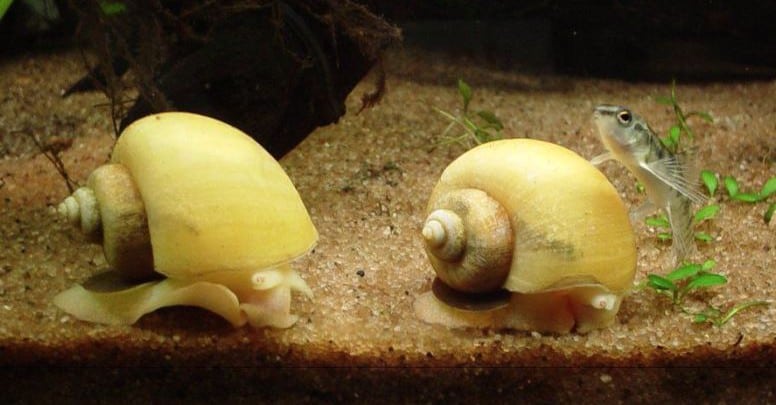
How Can You Know If Your Snail Is Dead?
As hard as it seems or feels it is not that much hard to detect if a snail is dead or alive. Let’s know them.
1. Shrunk Or Not
When a snail dies, its body shrinks, so that the shell becomes hollow. Besides, the body will die and the shell will be hollow if the snail has been dead for some time. If the shell seems weightless, your snail is most likely dead. The body decomposes and the skeleton is hollow if it’s gone for a while.
2. Moving or Not
In a small jar of water for an aquarium, the accused snail for one or two days. Make sure it’s relocated. Take a look at the snail particularly at night, as some are known to be nocturnal.
You may want to move a snail into a clean small container of freshwater if a snail does not respond to your touch. If the snail is not active even after its environment has been changed, it is probably dead.
The snail may have died if the snail changes out of the shell and doesn’t start moving. If the snail does not react to you picking up the shell and falling out, it is gone. That’s because it can not keep itself trapped anymore in its shell.
3. Rotten or Not
If a snail is dead, the product of ammonia continues to break down rapidly. The smell of this ammonia is pungent. So if you wonder if you’re dead or alive in your floating snail, here’s a quick test to check.
Take off and smell the snail from the tank. It can not be positively confirmed whether it survives or not by only moving the shell of the snail. You must also proceed to detect it. When a snail is dead, after a gentle shake it will also fall out of the shell.
What To Do If Your Snail Is Dead?
Of course, it will be a matter of grief if your favorite pet died. But you also have to take care of the dead snail. Here is what you should do with your dead snail.
1. Removal
When you find a dead snail, the first thing you need to do is to pull it from your tank and refill the water right away. A few hours after death, the snail’s manure quickly decomposes, but the shell does not decompose until it is crushed.
Removing a dead snail from the tank, particularly when there are other snails in the tank, needs to be handled carefully. It is necessary that all surviving snails first be kept in an isolated tank of clean water before the dead snail is removed.
Some aquarists warn you to keep them in the tank if the aquarium has scavengers such as hermit crabs that feed on snails.
2. Disposal
Take the dead snail out, place it in a ziplock, and freeze it before you chuck the garbage away the day after you lose it. It might not be the smartest thing to dump in the garbage right now due to the horrible odor.
Do not use a scoop to take a snail out of the tank and put it in your bag. You must not handle it with your bare hands. Check the skin out while the body is decomposed and not in its container.
Clean and put it into the tank with a pocket knife. The final decision is to put it in a jar with a bit of water and let it stay for one month in the bound jar. Then take the shell out, rinse it, and throw it for an elm or snail interested in a shell behind the wall.
How To Keep Your Snail Safe
Prevention is better than cure. As the phrase goes you should also take some precautions to save your snails, not from death, but bad health. Let’s get on with that.
1. Species
Make sure that snails of the same kind and type are educated. Do not clutter the tank with so many snails as this will easily transmit diseases.
2. Number
More than one snail is normally contained in the tank. You have to allow the full number of snails to be rear in the allocation of a tank for rear snails. You should have a tank of at least 1,8 gallons in case you are raising 1 or 2 snails.
3. Tank Size
When raising 6-9 snails, you can have 4.4 gallons at least in your tank. For 20 to 50 snails a tank of 22 gallons is required. You should consider the minimum tank size of 40 gallons if you plan on breeding snails.
4. pH-Level
Ensure that the pH varies from 7 to 7.5. Check the pH of tank water every day to control sufficient amounts of ammonia and nitrates. Make sure the clear, new water is dechlorinated by having it settle down for about 24 hours.
Do not use chemical substitutes, but rather Bio-starters, valuable bacteria, and heavy metal removers. Check out this amazing kit on Amazon, it will be really helpful for you to keep your snails healthy.
5. Smooth Surface
Make sure you have a smooth surface for your fish tank. The snails prefer a substratum of pebbles and gravel over sand – just make sure they are smooth without rough edges.
6. Feeding
It is very essential not to overfeed them, hence, snails are sluggish eaters. Up to one or twice a day, snails should be fed. Fried vegetables such as white carrots, cabbage, cucumber, broccoli, courgette and spinach, and cauliflower may be fed to snails.
Do not automatically feed your snail – place them in their new habitat for up to 8 hours before feeding them.
Conclusion
Above we have mentioned many ways to check, confirm, save, and develop for your snails. The existence of animals is not a matter of interest to humans. We take the basic stuff like how we sleep for granted when we see them.
The replies are both fascinating and shocking as we avoid thinking and answering questions. Now that snails in home aquariums are a common sight, increasing numbers of people realize how exciting they are.
The way you sleep is entirely different from the fish you keep with and human beings. So before taking any decision for your snails just make sure you check them out properly.






